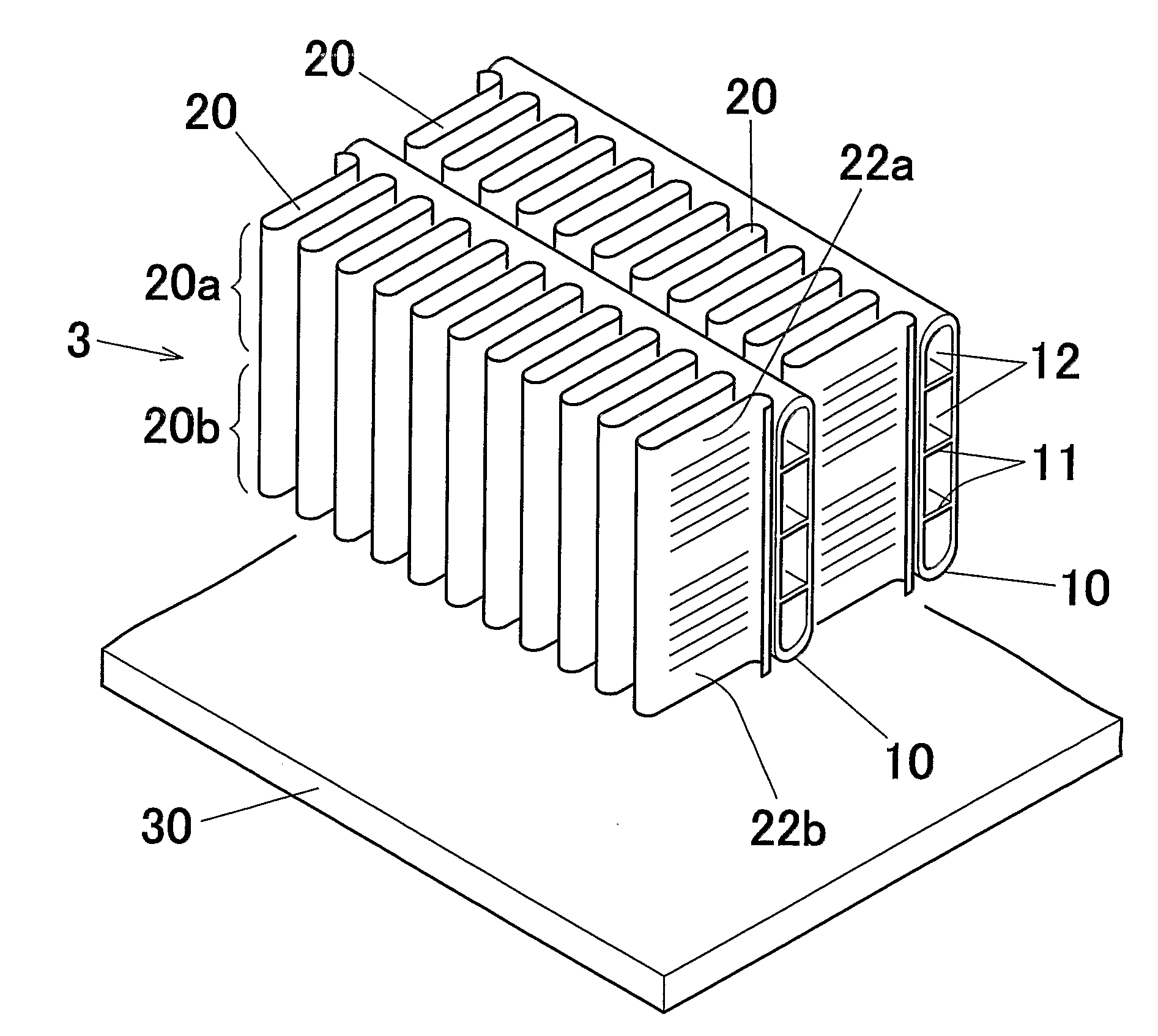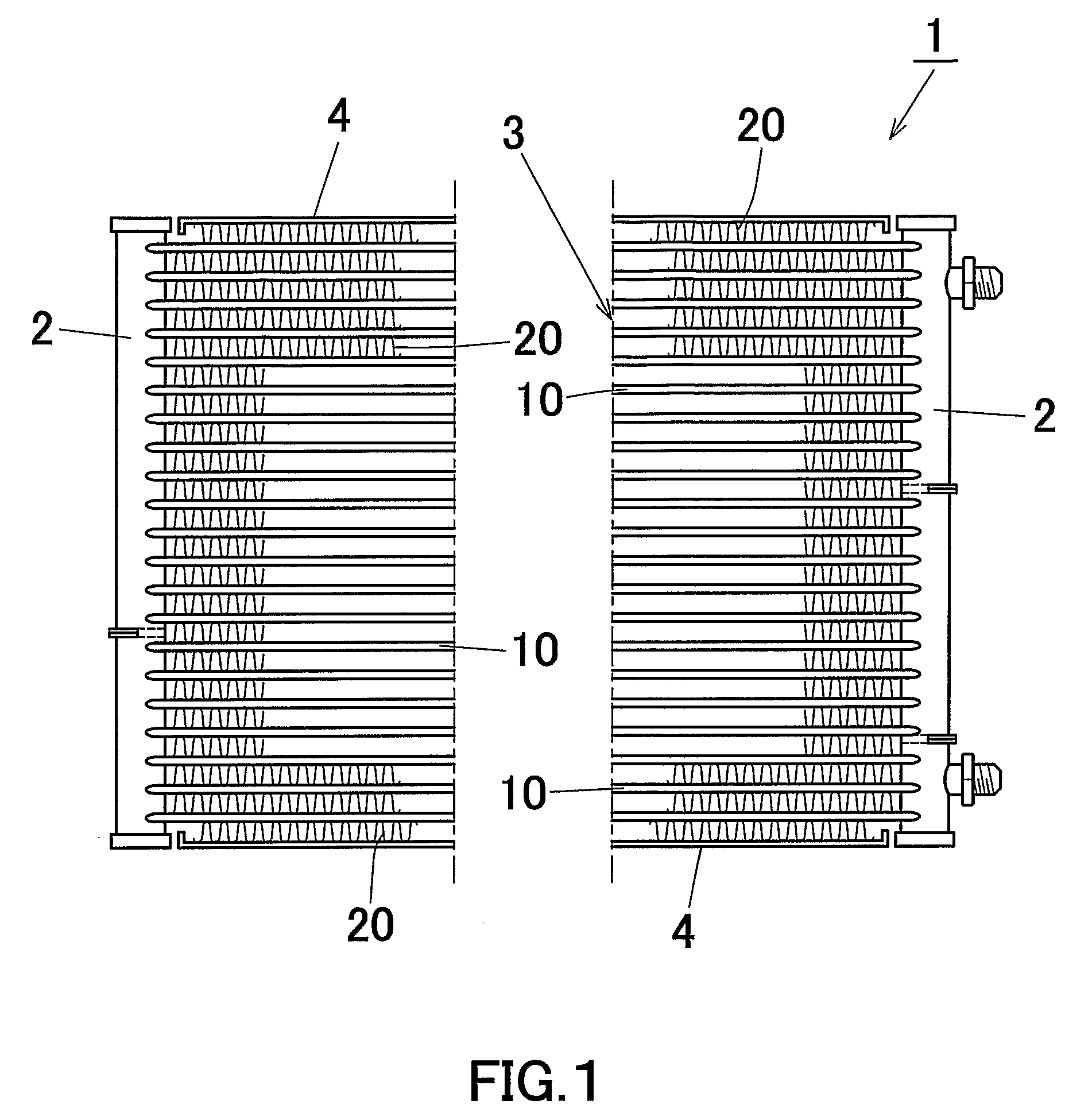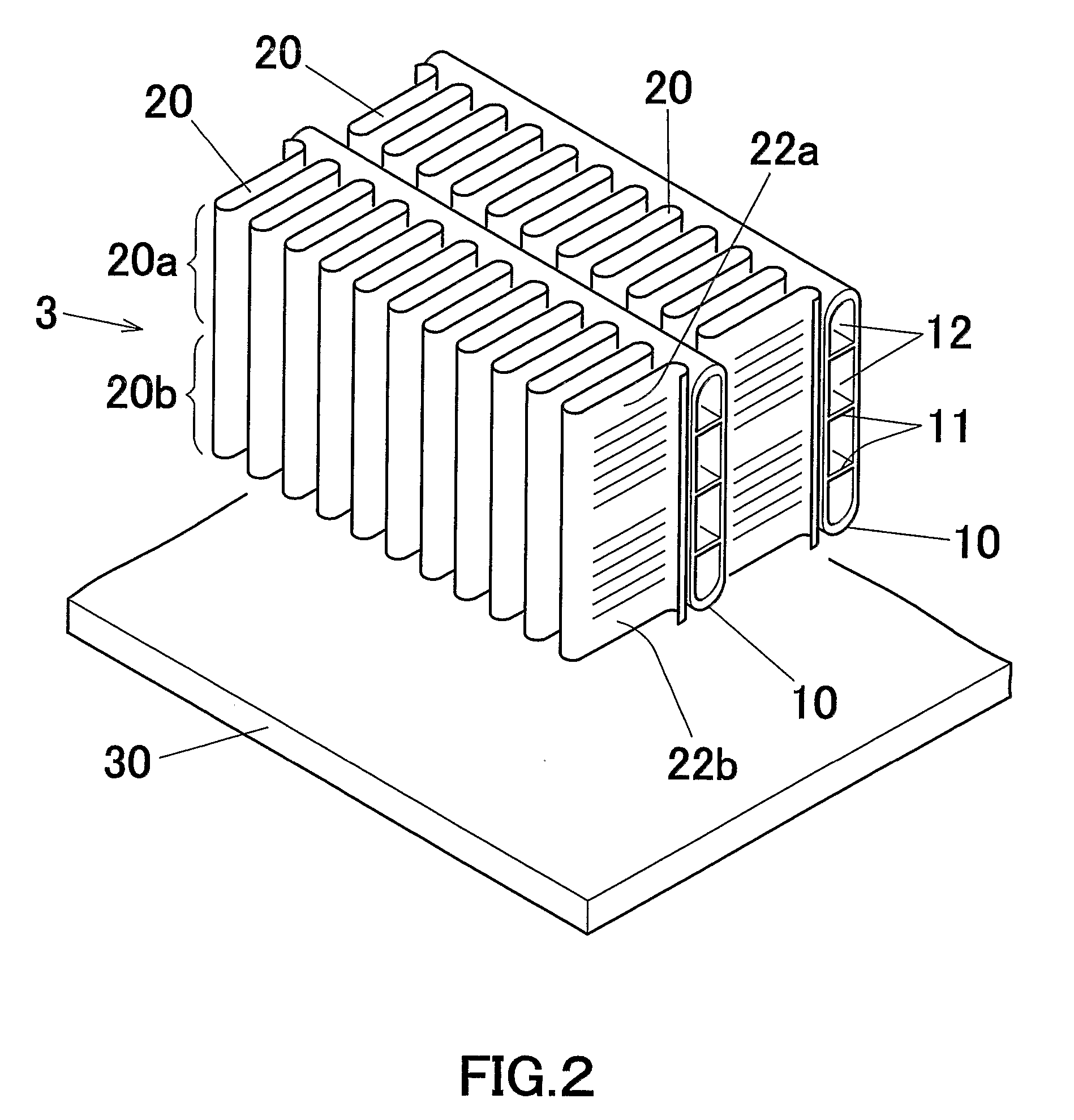Heat Exchange and Method of Manufacturing the Same
a technology of heat exchanger and heat exchanger, which is applied in the direction of manufacturing tools, soldering devices, light and heating equipment, etc., can solve the problems of inability to maintain the strength of the fin deteriorates, etc., and achieves the effect of restrainting the strength deterioration at the one side portion of the fin, preventing the deterioration of the strength of the fin, and preventing the deterioration of the strength
- Summary
- Abstract
- Description
- Claims
- Application Information
AI Technical Summary
Benefits of technology
Problems solved by technology
Method used
Image
Examples
examples 2 , 5 , 6 & 8
Examples 2, 5, 6 & 8
[0088] As shown in FIG. 2, a single fin 20 was disposed between the adjacent tubes 10 and 10 to thereby obtain a provisionally assembled core portion 3.
[0089] KAl4 as flux was applied to the entire provisionally assembled core portion 3 by spraying, and then the core portion 3 was subjected to heating of 600° C.×10 min in a brazing furnace in a state in which an Al-20% Zn alloy plate 30 was disposed 10 mm apart from the one side of the core portion 3. In this heating for brazing, the Zn evaporated from the Al—Zn alloy plate 30 adhered to the fin 20 and then diffused into the fin 20. Since the Zn diffusion amount becomes smaller as the distance from the Al—Zn alloy plate 30 increases, the Zn concentration along the widthwise direction of the Zn diffusion amount became relatively lower at the one side portion 20a of the fin 20 apart from the Al—Zn alloy plate 30 and higher at the other side portion 20b of the fin 20 near the Al—Zn alloy plate 30.
[0090] In Table 1...
examples 3 & 4
[0091] As shown in FIG. 3, two separate fins 21a and 21b were disposed between the adjacent tubes 10 and 10 with a fin distance D of 1.5 mm to obtain a provisionally assembled core portion 3. Then, KAl4 as flux was applied to the entire provisionally assembled core portion 3 by spraying.
[0092] Then, the core portion 3 was subjected to heating of 600° C.×10 min in a brazing furnace in a state in which the Al—Zn alloy plate 30 (shown in FIG. 2) was disposed near the one side fin 21b of the core portion 3 to braze the tube 10 and fins 21a and 21b.
[0093] In brazing the core portion 3, the core material composition of two fins before brazing, the Zn content of Al—Zn alloy plate 30 and the distance from the Al—Zn alloy plate to the core portion were adjusted. As a result, the fin core material compositions of the one side fin 21a and the other side fin 21b, the Zn concentration difference in the compositions after the brazing are shown in Table 1.
example 7
[0094] As shown in FIG. 3, two fins 21a and 21b were disposed between the adjacent tubes 10 and 10 with a fin distance D of 1.5 mm to obtain a provisionally assembled core portion 3.
[0095] Then, KZnF3 as flux was applied only to the other side fin 21b of the provisionally assembled core portion 3 by spraying, and then the provisionally assembled core portion 3 was subjected to heating of 600° C.×10 min in a brazing furnace to braze the tube 10 and fins 21a and 21b.
[0096] During the brazing of the core portion 3, since the Zn evaporation in the other side fin 21b was restrained by the flux applied on the other side fin 21b, the fin core material composition at the one side fin 21a and the other side fin 21b and the Zn concentration difference in the composition after the brazing became as shown in Table 1.
PUM
| Property | Measurement | Unit |
|---|---|---|
| pitting potential | aaaaa | aaaaa |
| distance | aaaaa | aaaaa |
| thickness | aaaaa | aaaaa |
Abstract
Description
Claims
Application Information
 Login to View More
Login to View More - R&D
- Intellectual Property
- Life Sciences
- Materials
- Tech Scout
- Unparalleled Data Quality
- Higher Quality Content
- 60% Fewer Hallucinations
Browse by: Latest US Patents, China's latest patents, Technical Efficacy Thesaurus, Application Domain, Technology Topic, Popular Technical Reports.
© 2025 PatSnap. All rights reserved.Legal|Privacy policy|Modern Slavery Act Transparency Statement|Sitemap|About US| Contact US: help@patsnap.com



